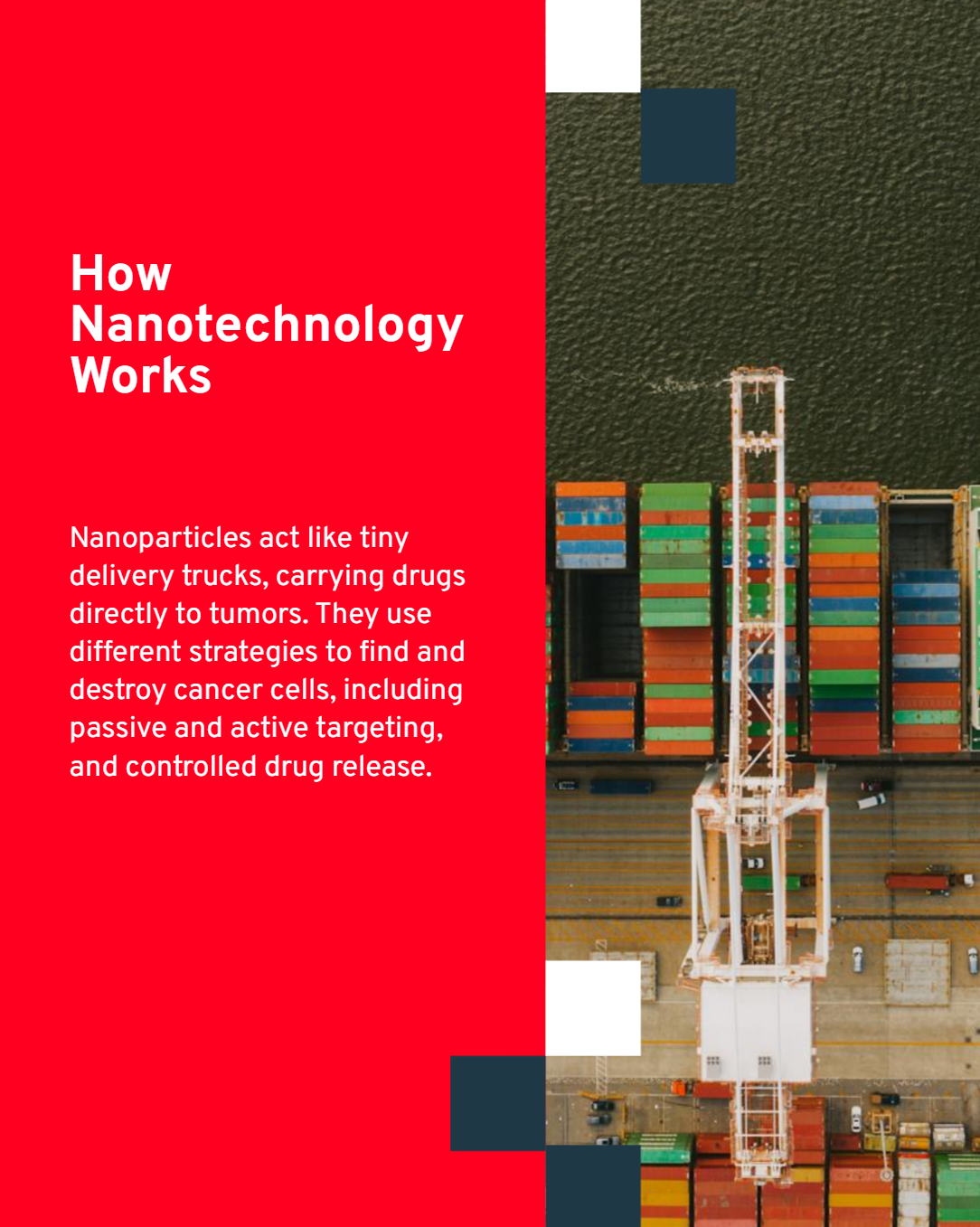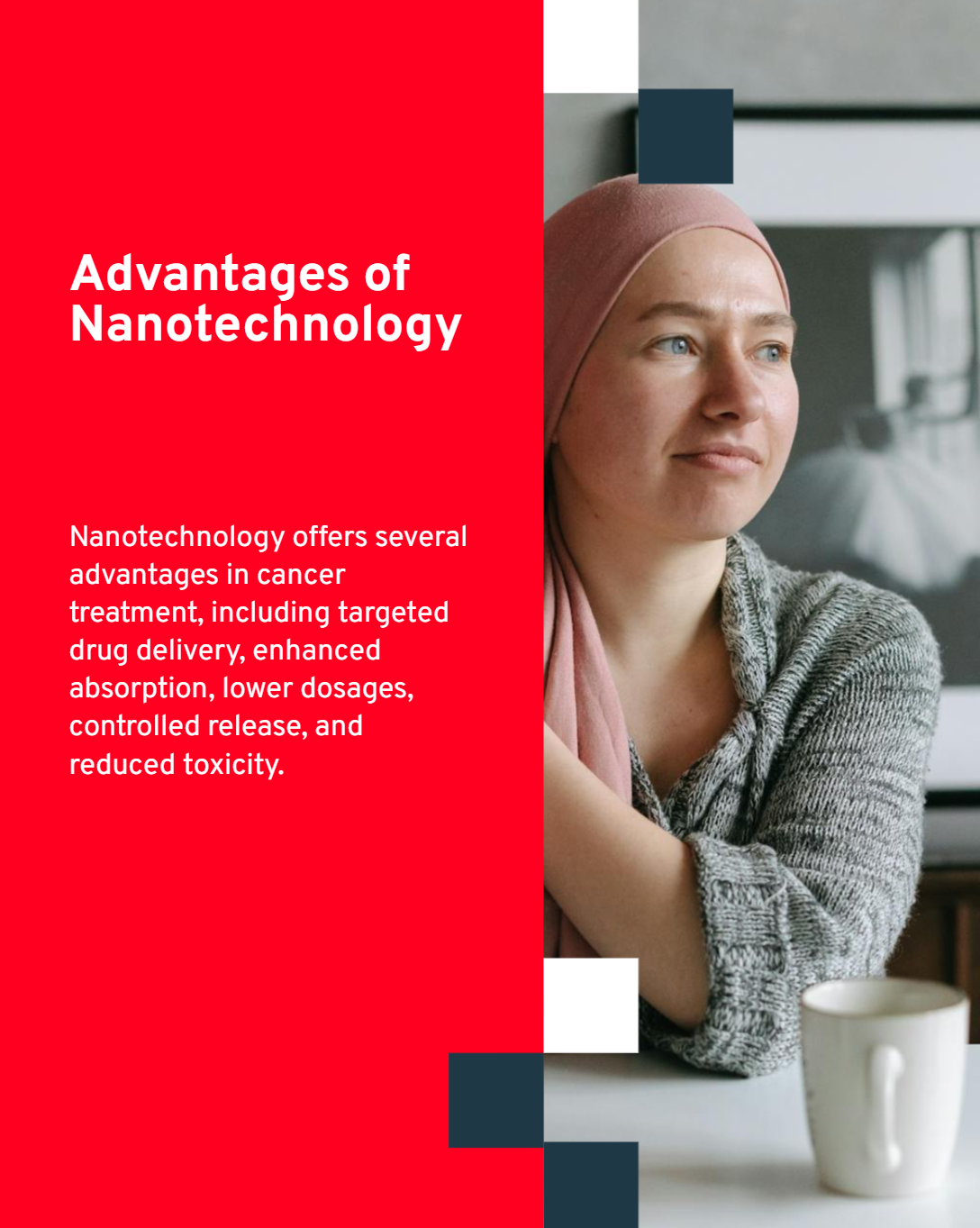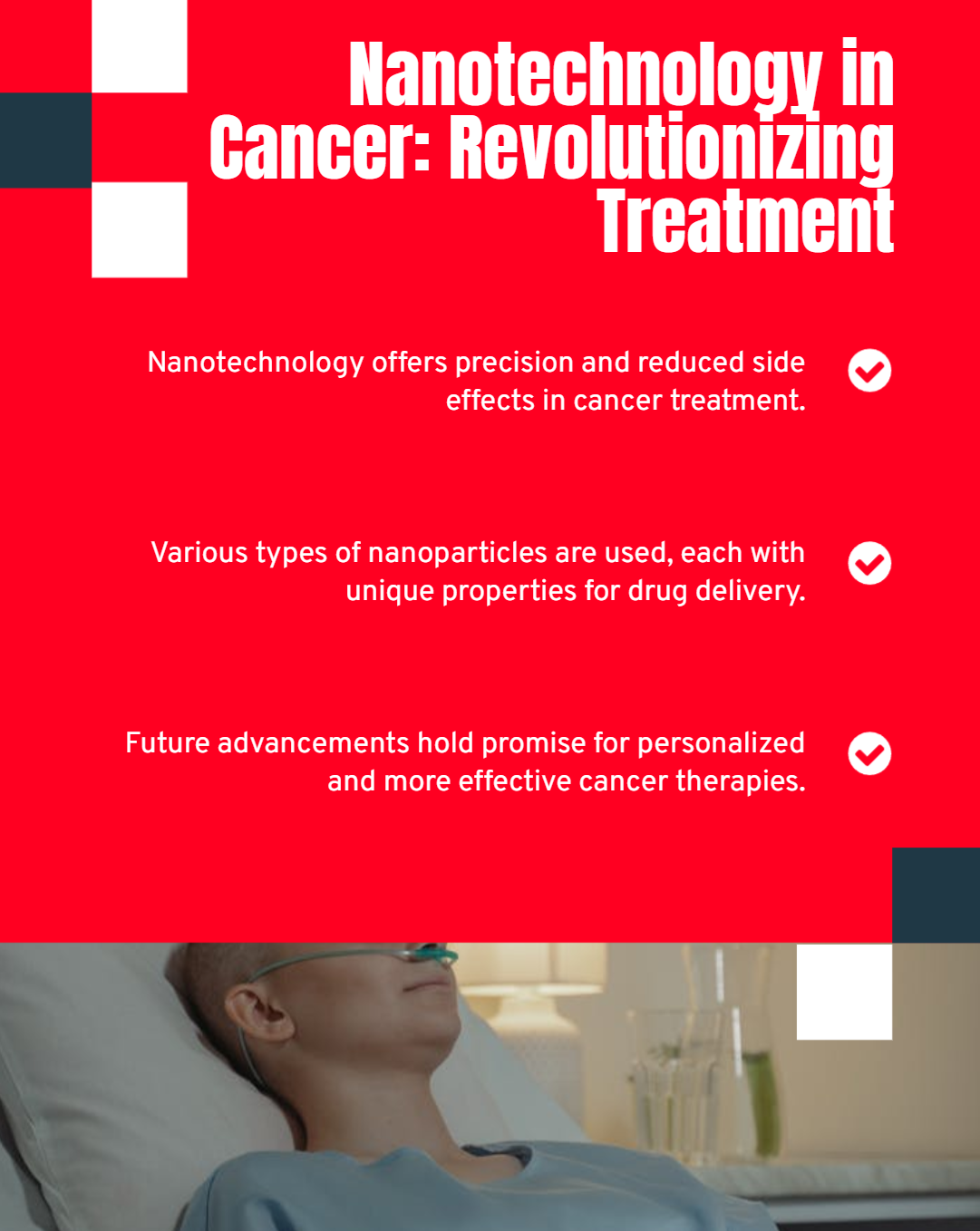Cancer remains one of the most complex and devastating diseases worldwide, affecting millions each year. Cancer treatments such as chemotherapy, radiation, and surgery, while effective, often come with significant side effects and limitations. However, nanotechnology in targeted drug delivery is revolutionizing how we approach cancer treatment, offering precision, reduced side effects, and improved efficacy.
Nanotechnology involves the manipulation of materials at the nanoscale (1–100 nanometers) to develop novel medical applications. In cancer treatment, nanoparticles (NPs) are engineered to deliver drugs directly to cancer cells, minimizing damage to healthy tissues.
These nanoparticles can be made from lipids, polymers, metals, or even proteins, and are designed to interact specifically with cancer cells to improve treatment outcomes.

Nanotechnology-based drug delivery systems work by using nanocarriers that transport anti-cancer drugs directly to tumors. These nanocarriers use different strategies to locate and destroy cancer cells:
Tumors have leaky blood vessels and poor lymphatic drainage, which allows nanoparticles to accumulate in cancerous tissues more than in healthy ones. This passive targeting mechanism ensures that a higher concentration of the drug reaches the tumor.
Nanoparticles can be modified with antibodies, peptides, or ligands that specifically bind to cancer cell receptors. This enables precise drug delivery, improving treatment effectiveness while reducing toxicity to normal cells.
Some nanoparticles are designed to release drugs in response to specific conditions such as pH changes, temperature, or enzyme activity within the tumor microenvironment. This ensures drugs are released only when and where needed.
Modern nanocarriers can be engineered to carry multiple drugs or integrate imaging agents, allowing doctors to track drug delivery in real time.
Lipid-Based Nanoparticles
Polymer-Based Nanoparticles
Metal-Based Nanoparticles
Carbon-Based Nanoparticles

| BENEFIT | DESCRIPTION |
|---|---|
| Targeted Drug Delivery | Directs drugs specifically to cancer cells, reducing side effects on healthy tissues. |
| Enhanced Drug Absorption | Increases the solubility and bioavailability of drugs. |
| Lower Drug Dosages | Improves drug effectiveness, allowing lower doses to achieve desired results. |
| Controlled Release | Releases drugs in a controlled manner, improving treatment efficiency. |
| Reduced Toxicity | Decreases the harmful side effects associated with chemotherapy. |
| Combination Therapy | Enables multiple drugs to be delivered simultaneously. |
Despite its promising benefits, nanotechnology in cancer drug delivery faces several challenges:
Developing nanodrugs involves complex manufacturing and strict regulatory approvals, making them expensive.
While nanoparticles improve drug delivery, some materials may accumulate in organs and cause long-term toxicity.
Due to their complex nature, nanomedicines require extensive testing for safety, efficacy, and approval, which can slow down commercialization.
Cancer cells may develop resistance to nanoparticle-based drugs over time, reducing their effectiveness.
Several nanotechnology-based cancer treatments have already been approved and are in clinical use:
| DRUG NAME | NANOTECHNOLOGY TYPE | CANCER TYPE |
|---|---|---|
| Doxil (Liposomal Doxorubicin) | Liposomes | Ovarian Cancer, Multiple Myeloma |
| Abraxane (Albumin-bound Paclitaxel) | Protein-based Nanoparticles | Breast, Lung, Pancreatic Cancer |
| Onivyde (Irinotecan Liposome) | Liposomes | Pancreatic Cancer |
| Myocet (Non-pegylated Liposomal Doxorubicin) | Liposomes | Breast Cancer |
These success stories demonstrate the real-world impact of nanotechnology in cancer therapy.
The future of nanotechnology in oncology looks promising, with several cutting-edge advancements in research:
Personalized Nanomedicine
By using patient-specific genetic data, researchers are developing customized nanoparticles for individualized treatment.
Nanorobots for Cancer Therapy
Scientists are designing nanorobots capable of detecting and destroying cancer cells at the molecular level.
CRISPR-Loaded Nanoparticles
CRISPR gene-editing technology combined with nanoparticles could edit or silence cancer-causing genes.
AI-Driven Nanomedicine
Artificial intelligence (AI) is being used to design smarter nanoparticles, optimizing drug formulations and delivery systems.

Nanotechnology is revolutionizing cancer treatment, offering targeted, effective, and safer alternatives to conventional therapies. While challenges remain, continuous advancements are paving the way for more efficient and personalized cancer treatments.
As research progresses, nanomedicine could potentially cure certain cancers or significantly improve patient survival rates. The future of oncology is undoubtedly being shaped by the power of nanotechnology.
Nanoparticles enhance drug delivery by targeting cancer cells directly, reducing side effects, and improving drug absorption.
Most FDA-approved nanomedicines are considered safe, but long-term toxicity and biocompatibility are still being studied.
While it significantly improves treatment, a complete cure depends on various factors such as cancer type, stage, and individual response.
Nanomedicines are generally more expensive due to high production and research costs, but advancements may reduce costs over time.
Future developments include personalized nanomedicine, nanorobots, AI-driven drug delivery, and gene-editing nanoparticles, all of which could further enhance cancer treatment.
 06.02.2025
06.02.2025